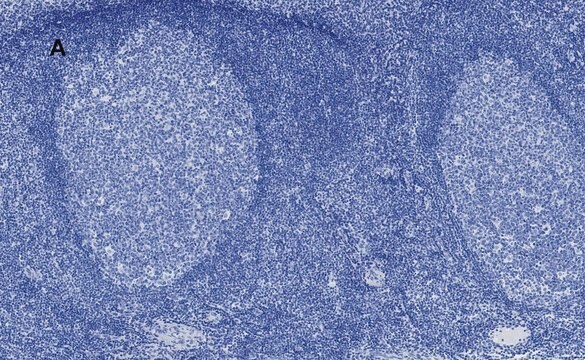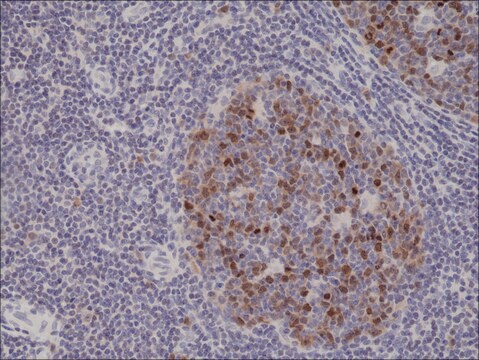A5102
Anti-Aurora B antibody produced in rabbit
IgG fraction of antiserum, buffered aqueous solution
Sinónimos:
Anti-AIM-1, Anti-AIR-2 Kinase, Anti-AIRK-2
About This Item
Productos recomendados
biological source
rabbit
Quality Level
conjugate
unconjugated
antibody form
IgG fraction of antiserum
antibody product type
primary antibodies
clone
polyclonal
form
buffered aqueous solution
mol wt
antigen 41 kDa
species reactivity
rat, mouse, human
packaging
antibody small pack of 25 μL
technique(s)
immunoprecipitation (IP): suitable
indirect immunofluorescence: 1:50 using HeLa cells
microarray: suitable
western blot: 1:1,000 using nuclei-enriched fraction of mouse NIH-3T3 cells
western blot: 1:1,000 using using PC-12 rat phaeochromocytoma cells
UniProt accession no.
shipped in
dry ice
storage temp.
−20°C
target post-translational modification
unmodified
Gene Information
human ... AURKB(9212)
mouse ... Aurkb(20877)
rat ... Aurkb(114592)
General description
Specificity
Immunogen
Application
- in immunoblotting
- in immunoprecipitation
- in immunofluorescence
- in immunofluorescence staining
- in western blotting
Western Blotting (1 paper)
Biochem/physiol Actions
Target description
Physical form
Disclaimer
¿No encuentra el producto adecuado?
Pruebe nuestro Herramienta de selección de productos.
Optional
Related product
Storage Class
12 - Non Combustible Liquids
wgk_germany
nwg
flash_point_f
Not applicable
flash_point_c
Not applicable
Elija entre una de las versiones más recientes:
¿Ya tiene este producto?
Encuentre la documentación para los productos que ha comprado recientemente en la Biblioteca de documentos.
Nuestro equipo de científicos tiene experiencia en todas las áreas de investigación: Ciencias de la vida, Ciencia de los materiales, Síntesis química, Cromatografía, Analítica y muchas otras.
Póngase en contacto con el Servicio técnico






